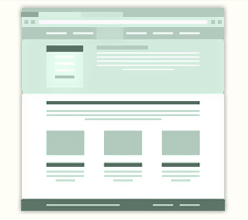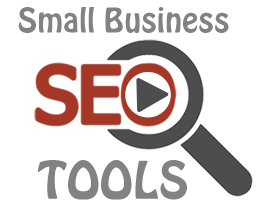8 Steps to Search Engine Optimization
Onsite SEO for a Search Engine Friendly Website
Onsite SEO includes optimization STEPS you can take on your website that will affect your search engine rankings.
You can optimize your website in simple ways, such as by making it easy to crawl forsearch engine botsand by improvinguser experience.Search engines can analyze how people interact with websites. This gives them a good indication of a website's quality and influences their search ranking algorithms.
STEP 1: Write quality content.
Good content brings return visitors who may eventually link to your site. Give those visitors a reason to come back by offering fresh content when they return. Search engine spiders will also visit your site more often once they notice that you update regularly. Search engines are also paying attention to the amount of time visitors spend on your site, along with the bounce rates and click-through rates of your web pages.
Bounce Rate measures the percentage of people who come to your website and leave "instantly." A high bounce rate is NOT good for your website.
Click-Through Rate measures the number of pages a site user clicks through before leaving the domain or returning to a search engine results page. A domain that has a high number of clicks to other internal pages is considered to be more relevant. A high click-through rate is good for your website.
STEP 2: Make your website easy to navigate.
 How your site is structured strongly influences your SEO. If your navigation structure is organized well, visitors will reach their desired information within one or two clicks. Google rewards websites for this. The best way to do this is ensure your site incorporates a header menu that is easy to navigate.
How your site is structured strongly influences your SEO. If your navigation structure is organized well, visitors will reach their desired information within one or two clicks. Google rewards websites for this. The best way to do this is ensure your site incorporates a header menu that is easy to navigate.
Also keep in mind that your website visitors may not land on your site at your home page. You should make it easy for them to get oriented and find their way around. A confused visitor will often give up and leave your website quickly.
A site map can be a tremendous help for website navigation. A site map is a separate HTML page that acts as a directory of the pages on your website. Each page listed in the site map is hyperlinked. A site map is not only good for getting search engine spiders to easily crawl your site, it's a useful tool for your visitors.
STEP 3: Utilize effective internal linking.
Every page of your website should be linked to from at least one other page. If there are any pages that aren't linked to internally (which also don’t have any external links pointing to them), then there's no way for search engines to find them.
- Keep in mind, not all internal links are viewed equally by search engines. The more prominent the location of the link, the more value it's assigned. So, an internal link placed within the main content of a web page will pass more authority than an internal link placed in the footer.
- You should add direct links from your home page to your most important web pages and remove links from your home page to pages of low importance.
- Variation is also important. Don't use the same clickable text (anchor link text) for every internal link to a particular web page.
STEP 4: Design web pages that are small in file size.
If your page size is too large, a search engine spider that wants to index your site, might skip you if it "times out" while loading your page. The size of a web page consists of the HTML file, all graphics being loaded, and every script being imported. Search engines are especially concerned about site speed as an important ranking factor.
STEP 5: Create web pages that are mobile friendly.
 With over 60% of all searches conducted on mobile devices, search engines have placed a priority on ensuring the positive experience of the mobile device user. Mobile-friendliness has become a significant ranking factor for SEO.
With over 60% of all searches conducted on mobile devices, search engines have placed a priority on ensuring the positive experience of the mobile device user. Mobile-friendliness has become a significant ranking factor for SEO.
Responsively-designed sites are mobile-friendly. They use CSS3 media queries to serve the same content to mobile and desktop users using a flexible design that adapts to the size of a user's screen.
STEP 6: Use effective title tags.
The title of a web page can be seen in a web browser's title bar. It can also be seen in search results page as a blue clickable link. It describes the contents of a web page in one sentence. A page title should be concise, descriptive, include keywords, attract attention and entice people to click on it in a search results page.
Make certain every web page has a unique title tag. Also try to limit the length of the title to 65 characters, including spaces.
STEP 7: Add unique images with ALT tags.
 Images can be used in a website to communicate ideas quickly and visually. They also help to grab and maintain a visitor's attention. They may also increase traffic to your website from search engines through image-oriented searches. Google does not want multiple copies of the same graphic, so stock images will less likely be found in these types of searches. Instead include unique, relevant images.
Images can be used in a website to communicate ideas quickly and visually. They also help to grab and maintain a visitor's attention. They may also increase traffic to your website from search engines through image-oriented searches. Google does not want multiple copies of the same graphic, so stock images will less likely be found in these types of searches. Instead include unique, relevant images.
Also be sure to take advantage of image ALT tags and title tags, and give your images meaningful names. Using image ALT tags, which are basically image descriptions, will help the search engines understand the image. ALT tags also make your site more accessible to visually impaired people using text readers. Read:Image ALT Tags for SEO: What, Where, Why & How.
STEP 8: Use heading tags.
Headings add meaning and structure to web pages and make certain words or phrases stand out. Visitors will skim your pages by its headings to decide whether or not to stay. In HTML coding, the heading tags range from h1 to h6 in a top-down hierarchy. The most important heading tag is the h1 tag and least important is the h6 tag. (Heading tags are not actually seen in a web page — only in the page source.)
Before the growing popularity of HTML5, it was typical to include just one h1 tag in a web page. That h1 tag, thus, became a key component of on-site SEO. Now it's possible to utilize multiple h1 tags on a per-section basis, perhaps lessening its importance in terms of SEO. Headings are still valuable, though, because they make your content easier to understand and may help to keep visitors on your site longer.
SEO TOOLS
SEO Tools are also useful for search engine optimization.
See our list of website analyzers, content checkers, image SEO tools and URL tools. They'll help you analyze your website and improve its online presence.
Google also provides many free SEO tools.
See also Understanding Search Engines | NH SEO Services
Understanding Search Engine Crawlers | What is SEO?

